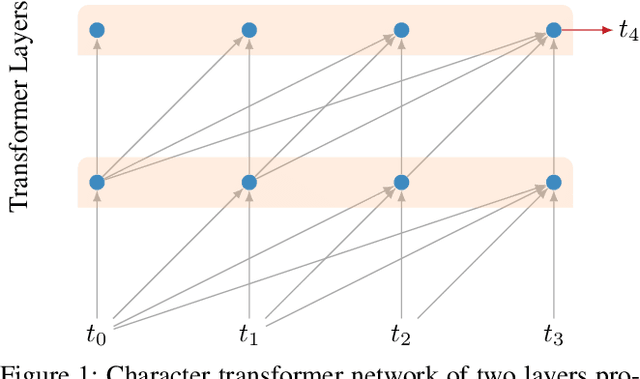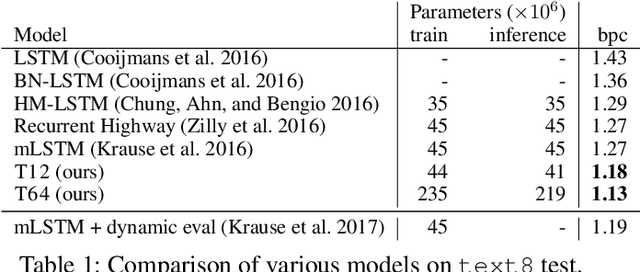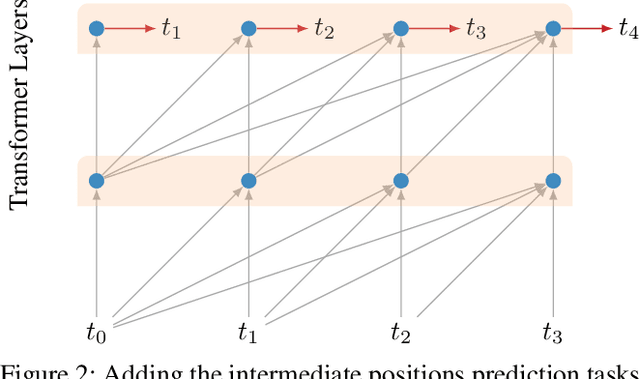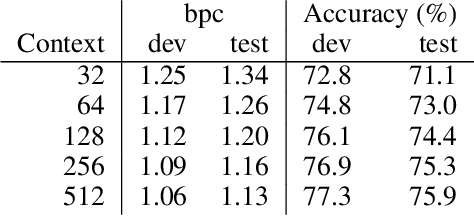Character-Level Language Modeling with Deeper Self-Attention
Paper and Code
Aug 09, 2018



LSTMs and other RNN variants have shown strong performance on character-level language modeling. These models are typically trained using truncated backpropagation through time, and it is common to assume that their success stems from their ability to remember long-term contexts. In this paper, we show that a deep (64-layer) transformer model with fixed context outperforms RNN variants by a large margin, achieving state of the art on two popular benchmarks- 1.13 bits per character on text8 and 1.06 on enwik8. To get good results at this depth, we show that it is important to add auxiliary losses, both at intermediate network layers and intermediate sequence positions.
* 11 pages, 8 figures
 Add to Chrome
Add to Chrome Add to Firefox
Add to Firefox Add to Edge
Add to Edge